Mulch is a material that covers the top of the soil and has several advantages for gardens and plants. Mulch can help with moisture retention, weed control, soil temperature regulation, erosion prevention, and soil fertility enhancement. Mulch can improve your landscape’s appearance by providing colour, texture, and contrast.
Mulches, however, are not all made equal. Some mulches might be better suited for your needs than others depending on your climate, soil composition, plant preferences, and aesthetic objectives. In this article, we’ll go through some of Houston’s top mulch options and discuss how to pick and use each one effectively.
Why Mulch in Houston?
Houston experiences hot, humid summers and moderate winters due to its humid subtropical climate. Although annual rainfall varies greatly from year to year, it is approximately 50 inches on average. Additionally, Houston has dense clay soils that are frequently compacted and have poor drainage.
For gardeners and landscapers who want to maintain healthy and beautiful plants, these circumstances provide significant difficulties. Mulching can assist in resolving some of these problems by
- Reducing water loss through runoff and evaporation
- Keeping the soil warmer in the winter and cooler in the summer.
- Enhancing clay soil aeration and drainage
- As mulch breaks down, adding organic matter and nutrients to the soil
- Preventing the growth of weeds and their ability to compete with plants.
- Preventing wintertime frost damage to plant roots
- Giving your landscape a tidy and appealing appearance
Types of Mulch for Houston
Mulch comes in two primary categories: organic and inorganic.
Natural materials that break down over time, such as wood chips, bark, straw, leaves, grass clippings, coco coir, etc., are used to make organic mulches.
Inorganic mulches are made of manufactured or natural materials like rubber, plastic, pebbles, stones, landscape fabric, etc. that do not decompose.
Depending on your particular needs and preferences, each type of mulch has benefits and drawbacks. When selecting a type of mulch for your Houston garden, keep the following things in mind:
1. Price:
Organic mulches are typically less expensive than inorganic ones, particularly if you can get them for nothing or locally. However, organic mulches require more frequent replacement than inorganic ones, which could raise the overall cost.
2. Durability:
Because inorganic mulches do not degrade or deteriorate, they last longer than organic ones. However, over time, exposure to sunlight and weather can cause inorganic mulches to become brittle or lose their colour.
3. Aesthetics:
Inorganic mulches can complement or contrast your landscape design with their wide range of colours and shapes. However, some people might prefer the organic mulches’ natural appearance because it fits in with the surroundings.
4. Purpose:
Because organic mulches degrade to release nutrients and organic matter, they benefit soil and plants more than inorganic ones. However, inorganic mulches might be superior to organic ones in terms of weed control and moisture retention.
5. Maintenance:
Because they must be changed or supplied frequently to maintain their depth and quality, organic mulches require more maintenance than inorganic ones. To avoid the buildup of debris or pests, inorganic mulches may need to be cleaned or removed on a regular basis.
Here are some of Houston’s top mulch options based on these criteria:
Organic Mulches
1. Bark or Wood Chips

One of the most well-liked and widely accessible types of organic mulch is wood chips or bark. They are constructed from various tree species’ bark or shredded, chipped, or crushed wood. Depending on the parent material, they are available in various sizes, hues, and textures.
For big areas like flower beds, shrub borders, trees, or pathways, wood chips or bark are suitable. They effectively manage weeds and enhance soil while retaining moisture, regulating temperature, and preventing erosion. Additionally, they give your landscape a rustic and natural appearance.
Bark or wood chips, however, may have some disadvantages, such as:
- If positioned too close to wooden structures, attracting termites or other insects.
- If they aren’t combined with a nitrogen-rich fertiliser, they will deplete the soil’s nitrogen as they break down.
- Depending on the kind of wood or bark utilised, the pH of the soil can change.
- Depending on the size and quality of the material, taking a long time to disintegrate
For your Houston garden, use bark or wood chips as mulch:
- Pick a kind of wood or bark that is suitable for your plants’ requirements. Examples of plants that may benefit from pine bark’s acidity include azaleas and blueberries.
While hardwood chips are alkaline and may help plants that can tolerate an alkaline environment, like roses or clematis. - Spread a layer 3 to 4 inches thick over bare soil or around your plants. To prevent rotting or disease, keep it away from plant trunks and stems.
- To keep the layer’s depth and quality, replenish it annually or as needed.
2. Straw

Another popular type of organic mulch is straw, which is created from the dried stalks of crops like wheat, rice, oats, or barley. At farm supply stores or garden centers. It is typically sold in bales.
For vegetable gardens, annuals, or newly planted areas, straw is perfect. Excellent soil improvement, moisture retention, temperature regulation, weed control, and erosion prevention are all provided by it. Additionally, it gives your landscape a light and airy appearance.
But straw might have some disadvantages, like:
- Having weed seeds within that might sprout and outcompete your plants.
- Drawing rodents or other pests that could build nests or eat it
- Decreasing rapidly and needing replacement frequently.
- Being combustible and, if not kept moist, providing a fire risk.
In order to mulch your Houston garden with straw:
- Pick a clean, weed- and pest-free variety of straw. Avoid hay, which is produced from grasses that are more nutritious and contain more seeds than straw.
- Spread a layer 4 to 6 inches thick over bare soil or around your plants. To make air pockets that let air and water in, fluff it up with a rake or fork. To avoid matting or moulding, don’t pack it down too firmly.
- To preserve the layer’s depth and quality, replenish it as needed or every few months.
3. Coco Coir

A relatively new kind of organic mulch called coco coir is produced from the coconut’s fibrous husks. Usually, garden centres or internet vendors sell it in compressed bricks or blocks.
For indoor plants, compact spaces, or container gardens, coco coir is perfect. Excellent soil improvement, moisture retention, temperature regulation, weed control, and erosion prevention are all provided by it. Additionally, it gives your landscape a clean, tidy appearance.
However, there may be some disadvantages to coco coir, such as:
- Costing more than other kinds of organic mulch,
- Being more difficult to locate locally than other kinds of organic mulch
- Due to its coastal background, being salty and needing to be rinsed before use
- Being fragile and easily blown away in strong winds.
For your Houston garden, use coco coir as mulch:
- Opt for a low-salt, organic, and pesticide-free variety of coco coir. Some brands might have extra nutrients or modifications that could be good for your plants.
- Soak the block or brick in water until the fibres start to come loose. With a fork or your hands, fluff up the material after draining the extra water.
- Spread a layer 1 to 2 inches thick over bare soil or around your plants. Use your hands or a trowel to gently press it into place.
Inorganic Mulches
1. Rubber Mulch

A type of inorganic mulch called rubber mulch is produced from used tyres or other rubber goods. At home improvement stores or online retailers, it is typically sold in bags.
For playgrounds, pathways, or other places where toughness and security are priorities, rubber mulch is ideal. It effectively prevents erosion, moderates temperature, and effectively controls weeds. It also comes in a range of hues and forms that you may use to complement or contrast your landscape design.
However, there may be some drawbacks to rubber mulch, such as:
- Costing more than other kinds of inorganic mulch.
- Leaching chemicals into the soil or water due to its synthetic origin and potential for toxicity.
- Posing a fire risk when exposed to sparks or flames due to its flammability
- Being challenging to remove or discard after installation
How to apply rubber mulch to your Houston garden:
- Select rubber mulch that has received certification from reliable agencies like ASTM International or IPEMA.
for standards of excellence and security. Avoid brands that are inexpensive or unknown since they can contain pollutants or dangerous ingredients. - Spread a layer 2 to 4 inches thick over bare soil or around your plants. To make a smooth surface, rake or shovel the material evenly. To avoid overheating or damage, keep it away from plant trunks or stems.
- To keep the layer’s depth and quality, replenish it every few years or as needed.
2. Plastic Mulch

Another kind of inorganic mulch is plastic mulch, which is created from thin sheets of plastic film. At farm supply stores or online retailers, it is typically offered in rolls.
For crops like tomatoes, peppers, melons, squash, eggplants, etc. that require warm soil and great moisture retention, plastic mulch is suitable. It offers superior soil insulation, weed control, erosion avoidance, and pest deterrence. It also comes in a variety of hues that may influence the development and productivity of plants.
But there might be some drawbacks to using plastic mulch, such as:
- Costing more than other kinds of inorganic mulch.
- Needing to be removed and disposed of after usage because they are non-biodegradable
- Having a synthetic origin that could be hazardous to the environment and wildlife and that leaches chemicals into the soil or water
- Being challenging to implement and requiring specialised tools or labour
In order to mulch your Houston garden with plastic mulch:
- Pick a plastic mulch kind that is suitable for the requirements and preferences of your crops. For instance, red plastic helps increase the yield of tomatoes and peppers, black plastic helps warm the soil and reduce weeds, transparent plastic helps warm the soil but does not suppress weeds, silver plastic helps deter aphids and other insects, etc.
- Till the ground and add fertiliser and water as necessary. To ensure your plants receive an adequate supply of water, install a drip irrigation system underneath or on top of the plastic mulch.
- Using a tractor or by hand, cover the prepared soil with the plastic mulch. To stop wind damage, anchor the edges with soil, rocks, or pins. In the plastic where you intend to plant your crops, make holes or slits.
- Through the slits or holes in the plastic mulch, plant your vegetables. As required, water and fertilise. Keep an eye out for pests and diseases, then take appropriate action.
3. Stones or Rocks

Another sort of inorganic mulch is rocks or stones, which can be made from both natural and man-made materials including gravel, pebbles, river rocks, lava rocks, marble chips, etc. They are typically offered at garden centres or home improvement stores in bags or bulk.
Stones or rocks work well for xeriscaping, locations where little maintenance and great durability are sought, such as rock gardens. They effectively suppress weeds, Deterring pests and preventing erosion. Additionally, they come in a range of hues and forms that can give your landscape a distinctive and sophisticated appearance.
However, some disadvantages of rocks or stones include:
- Costing more than other kinds of inorganic mulch.
- Being cumbersome and difficult to apply and carry
- Because of their capacity to absorb and reflect heat, being potentially hazardous to plants.
- Being challenging to update or remove once installed
In order to mulch your Houston garden with pebbles or stones:
- Pick a rock or stone type that works with your landscape design and your budget. For instance, Pebbles are smooth and spherical, river rocks are natural and different, lava rocks are porous and lightweight, marble chips are bright and white, etc. All of these materials are inexpensive and simple to spread.
- Till the ground and add fertiliser and water as necessary. To stop weeds from growing through the pebbles or stones, lay a weed barrier fabric over the soil.
- Using a wheelbarrow or shovel, distribute the boulders or stones over the weed barrier fabric. Create a layer 2 to 4 inches thick over bare soil or around your plants. To make a smooth surface, rake them evenly or arrange them by hand. To avoid overheating or injury, keep them away from plant trunks or stems.
Frequently Asked Questions
1. How much mulch will I require for my garden?
Your garden’s size and the thickness of the mulch layer you intend to use will determine how much mulch you need. To calculate the square footage of your garden area, simply multiply its length by its breadth in feet. To calculate the number of cubic yards of mulch required, divide it by 27. You have 200 square feet, for instance, if your garden area is 10 feet by 20 feet. 200/27 x 0.25 = 1.85 cubic yards of mulch are required for a 3-inch layer of mulch.
2. In Houston, when is the ideal time to spread mulch?
The type of mulch you use and the intended usage for it will determine when in Houston you should apply it. You can use organic mulches, like wood chips or straw, before planting in late winter or early spring to help warm the soil and promote early development. You can use organic mulches like coco coir or leaves in late spring or early summer after planting to help chill the soil and retain moisture. You can use inorganic mulches like rubber or plastic, which assist control weeds and safeguard plants, at any time during the growing season.
3. How frequently do I need to refresh or replace my mulch?
Depending on the kind of mulch you use and how quickly it breaks down or degrades, you may need to renew or replace it more frequently. To preserve the depth and quality of organic mulches that disintegrate quickly, such as straw or grass clippings, you might need to refill them every few months or as necessary. Depending on their size and quality, organic mulches that disintegrate slowly, like wood chips or bark, may need to be replaced every year or a few years. You might need to change inorganic mulches, such as rubber or plastic, every few years or when they start to look bad or lose their effectiveness because they do not disintegrate but may fade or decay over time.
Bottom-line
Any gardener who wants to enhance their soil’s health, plant growth, and landscape’s aesthetic must regularly apply mulch. By lowering your care requirements, mulching can also help you save time, water, and money. But not all mulches are appropriate in every circumstance. When selecting a type of mulch for your Houston garden, keep in mind the local climate, the type of soil, the plants you prefer, and your aesthetic objectives.
We hope this post has given you additional information on some of the top mulch options available in Houston as well as how to pick and use them properly.
If you have any inquiries or remarks regarding this matter, Feel free to post them in the section below.
Enjoy your garden! 🌱


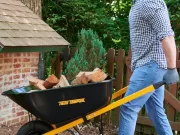






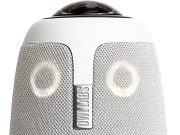



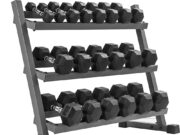





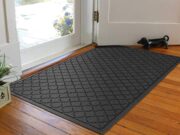
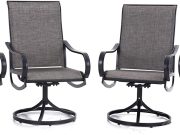



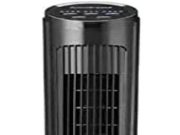
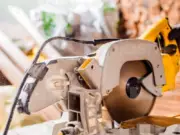







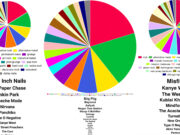


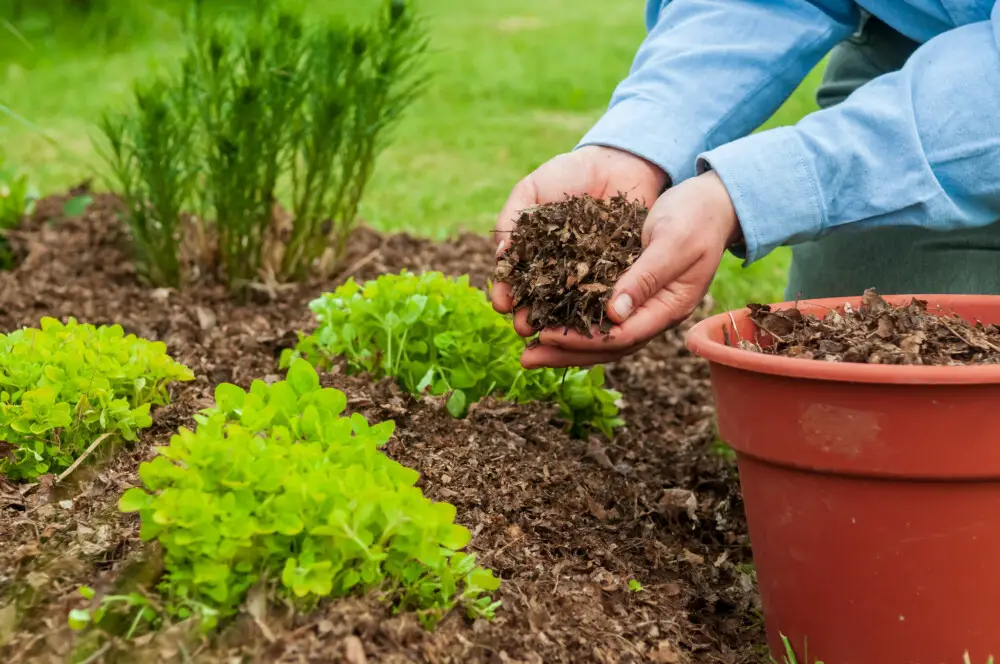

![10 Best Riding Mowers of 2023 [Reviews] best riding lawnmower for large yards](https://parker-marker.com/wp-content/uploads/2022/01/istockphoto-1324211486-170667a-238x178.jpeg)




![10 Best Riding Mowers of 2023 [Reviews] best riding lawnmower for large yards](https://parker-marker.com/wp-content/uploads/2022/01/istockphoto-1324211486-170667a-100x75.jpeg)
